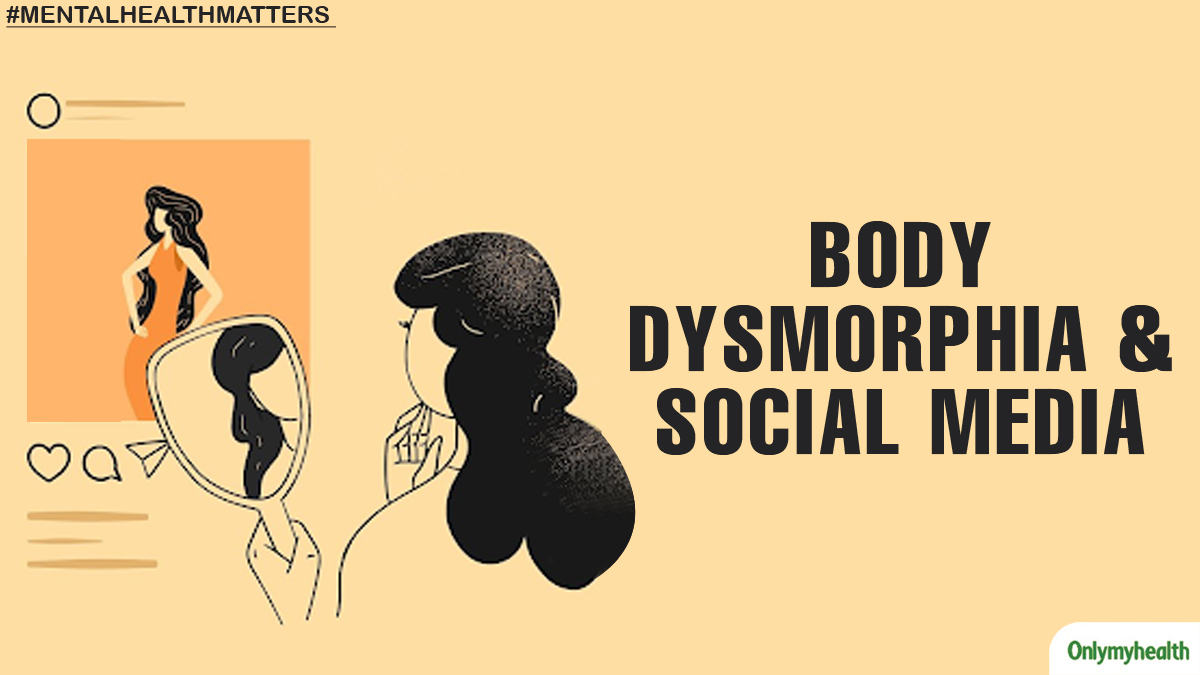

Social media has given rise to a prevailing quest for perfection, leading to the normalisation of image and video edits aimed at enhancing appearances. Consequently, societal perceptions of beauty standards have become increasingly limited which is evident in the current social media trends. This has contributed to a rise in body dysmorphia.
This week in our ‘Mental Health Matters’ series, we talk about body dysmorphia and the impact of social media on mental health. We spoke to Charu Prabhakar, RCI Accredited Clinical Psychologist, Lissun, Mental Health and Emotional Wellness Platform, who shared insights on the same.
What Is Body Dysmorphia

Prabhakar said, “Experiencing body dysmorphia is more than simply being insecure about a feature of your body. Body dysmorphia, also known as Body Dysmorphic Disorder (BDD), is a psychological condition marked by a persistent preoccupation with perceived flaws in one’s appearance. Individuals with body dysmorphia experience extreme distress and impairment in their daily lives. The perceived flaws in their appearance are often minor or even non-existent to others.”
Effects Of Body Dysmorphia

Prabhakar said, “People with BDD often consult doctors for concerns related to their facial features, body shape, skin, hair, and overall physical appearance.” Those with body dysmorphia may engage in behaviours, such as:
- Excessive checking of their appearance
- Frequent grooming to conceal the flaws
- Spending excessive money on fixing the perceived flaws
- Doctor shopping
- Seeking reassurance
- Avoiding social situations to cope with their distress
According to HHS Public Access, there is some preliminary data that suggests BDD and childhood sexual, emotional, and physical abuse may be related. BDD patients frequently avoid gazing at mirrors, which can make them feel better because they won’t be in contact with their reflection. As it enhances the likelihood that the avoidance behaviour would be done again in a similar circumstance, this relaxation serves as a negative reinforcer.
Also Read: Mental Health Matters: Why Do I Overthink So Much?
Social Media’s Impact on Body Dysmorphia

Prabhakar informed, “Social media is perpetuating unrealistic beauty standards set by society, the modelling, advertisement, and entertainment industries. Social media platforms manage to portray these unrealistic beauty standards with the help of easily accessible new technologies to photoshop images of celebrities, influencers, models, and even the average person, making it the new normal.”
She added, “Consumers of the content often forget the true side of the story, adding to the pressure to accept these misleading beauty standards in real life. Body dissatisfaction may result from routine exposure to these edited photographs.” Comparing oneself unfavourably to these unrealistic beauty ideals, resulting in feelings of inadequacy and self-criticism, becomes an inevitable loop. This comparison is especially harmful to those already predisposed to body dysmorphia as it escalates their preoccupation with being ‘perfect’ without any flaws.
Unrealistic Beauty Standards and Self-Perception

Prabhakar highlighted, “Unrealistic beauty standards promoted by society and culture through social media can influence one’s perception of self. Bombarded with images and reels of ‘perfect’ bodies and faces, it is natural to internalise these standards as the norm.” Consequently, one may develop a negative body image and judge yourself harshly for not meeting these unrealistic expectations, potentially leading to undergoing strict treatments or processes to meet these standards. This negative self-perception can be particularly harmful to those vulnerable to body dysmorphia, further fuelling their distress.
Also Read: Mental Health Matters: Why Do I Feel Sad All The Time?
Influencer Culture and Perfection Pressure

Prabhakar added, “Influencer culture often revolves around showcasing an idealised lifestyle and appearance. Many influencers present a seemingly perfect life and body, which can create immense pressure on their followers to attain a similar level of perfection.” This pressure to live up to an unattainable standard can lead to heightened body dissatisfaction and negatively impact mental well-being, contributing to developing or exacerbating body dysmorphia.
Mental Health Consequences of Edited Content

Social media’s prevalence of heavily edited and filtered content can have detrimental effects on mental health. When individuals consistently view these altered images, they may develop a skewed perception of reality and begin to view their unedited selves as flawed. This can lead to feelings of inadequacy, and enhance self-critical attitudes, which in turn can escalate to anxiety, depression, and body dysmorphia.
Coping with Social Media’s Influence on Body Image

Prabhakar said that coping with social media’s impact on body image requires conscious effort and self-awareness.
- Setting healthy boundaries with social media use can be beneficial, such as limiting exposure to content that triggers body dissatisfaction.
- Actively seeking body-positive content or diverse representations of beauty can help maintain an undistorted perception of reality.
- Seeking support from friends, family, or mental health professionals can provide valuable guidance and strategies for developing a more realistic and positive self-perception while reducing the impact of social media on body dysmorphia.
- Engaging in self-care activities, fostering self-acceptance, and practising mindfulness can also help promote a healthier relationship with one’s body and appearance.
Disclaimer
The information in this article is shared by an expert and is for informational purposes only. If you are dealing with such an issue, we advise you to consult with a counsellor and take the necessary measures.
اكتشاف المزيد من ينبوع المعرفة
اشترك للحصول على أحدث التدوينات المرسلة إلى بريدك الإلكتروني.
